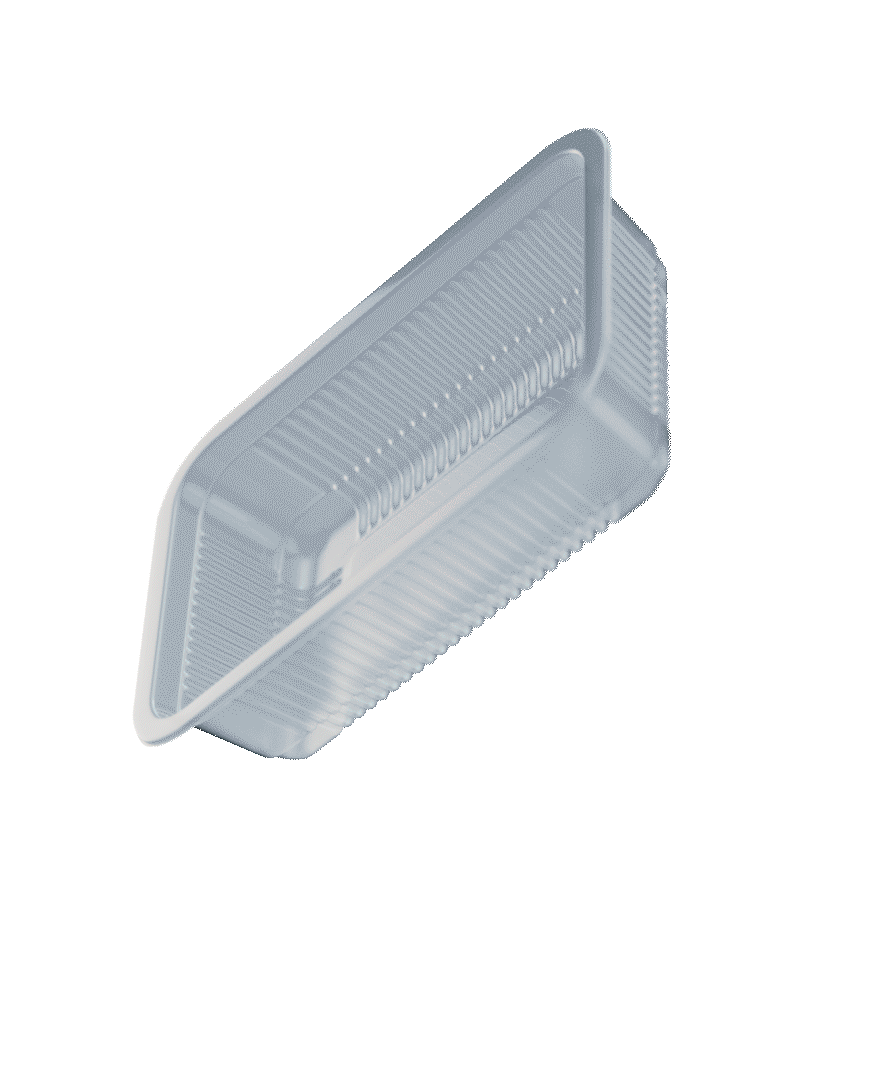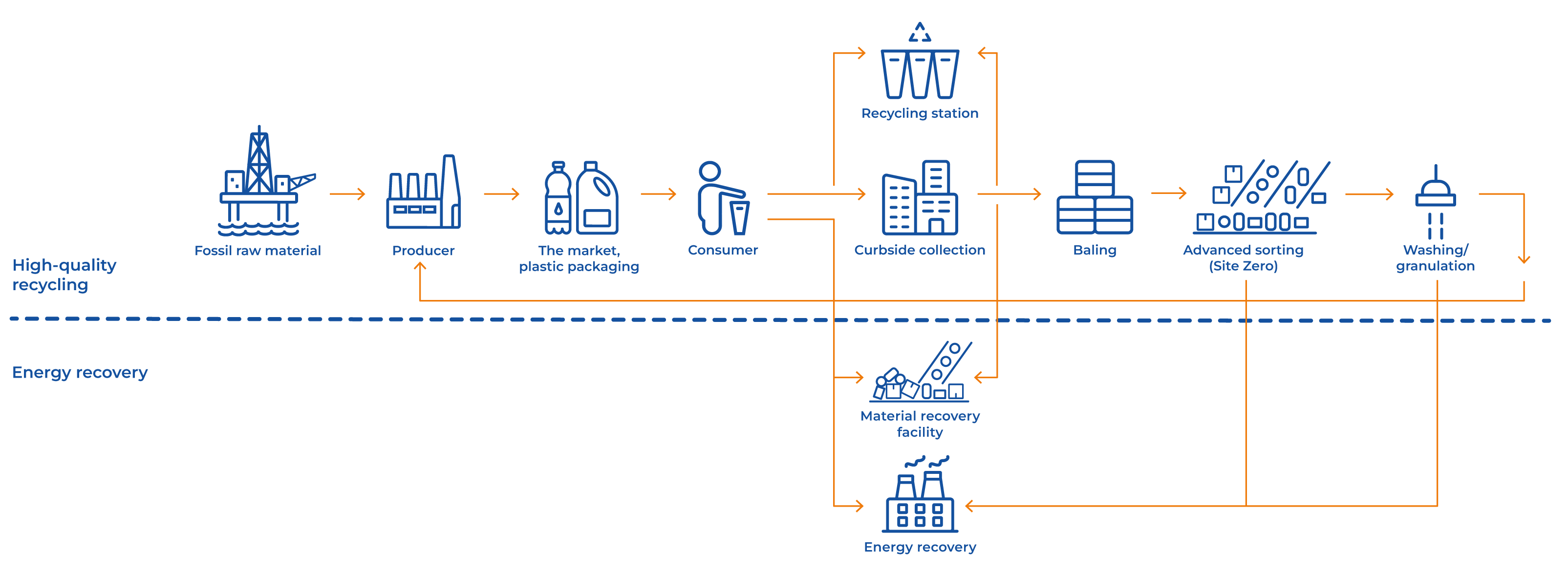Why is it important to collect and recycle plastic packaging?
Plastic has many unique advantages. Its good barrier properties, for example, increase the shelf life of food and reduce food waste. Thin and lightweight packaging makes transport easier. The material is also flexible, which allows for many uses, especially in the packaging industry.
If plastic packaging is thrown into household waste, it is sent for incineration, which generates significant emissions. According to the Swedish Environmental Protection Agency, plastic incineration accounts for approximately 7 per cent of Sweden’s total carbon dioxide emissions. In addition, significant emissions are generated during the manufacture and production of new plastic from fossil natural resources.
Today, most packaging in Europe is made from new, fossil-based raw materials. Recycled plastic accounts for just under 10 per cent of total production, according to Plastics Europe (2024), “The Circular Economy for Plastics – A European analysis”.

8 out of 10 plastic packaging items come to us
Approximately 8 out of 10 plastic packages collected are sent to our sorting facility in Motala, where sorting takes place around the clock.
All plastic packages are sorted according to plastic type and then packed into bales. They are then sent for high-quality recycling at our certified recyclers in Europe. No plastic leaves the EU.
Our mission and goal are to recycle as much as possible, ensuring the material is of such high quality that it can be used to produce new plastic packaging or high-quality plastic products.
In 2024, we recycled 42.4 percent of all material that came to the facility. This amounts to 30,651 tonnes of plastic packaging, marking a 20 percent increase compared to the previous year.
Below, you can see the value chain for plastic packaging from households, outlining the journey from start to finish. Our operations are what is known as advanced sorting.
The Plastic Packaging Journey
The value chain for plastic packaging involves several actors and processes. It starts with producers placing the packaging on the market and consumers purchasing it, such as in a grocery store. From there, it is either sorted at a recycling station or through property-based collection, or it ends up in household waste.
If packaging is thrown away with household waste, it’s incinerated for energy recovery. But if sorted at the source, most of it goes to Svensk Plaståtervinning. We use advanced sorting, then send it to certified recycling partners, where it’s washed, granulated, and turned into new plastic packaging or high-quality plastic products.
Site Zero sorts most plastic packaging on the Nordic market, but some plastics remain difficult to recycle efficiently. We are working to solve this.
The waste from our operations mainly consists of non-plastic materials and plastics without recycling solutions. This waste is incinerated in Swedish facilities to generate energy. Our goal is to minimize the amount sent to incineration.
Recycling (tonnes):
30 651
(2023: 25 241)
Recycling contribution (%):
42,4
(2023: 43,0)
“The recycling contribution indicates the proportion of plastic packaging that we have received at Site Zero that ultimately becomes recycled raw material.”



![fc iso9001 14001 45001_swedac-white[9]](https://www.svenskplastatervinning.se/wp-content/uploads/fc-iso9001-14001-45001_swedac-white9.png)